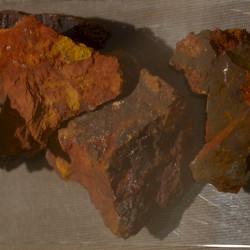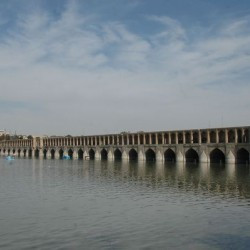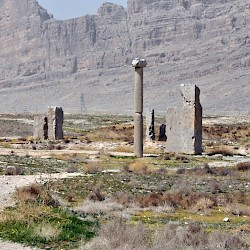Jona Lendering
Jona Lendering read history at Leiden University (MA 1993), specialized in Mediterranean culture at the Amsterdam Free University (MA 1996), and worked at excavations in Holland (Riethoven) and Greece (Halos). After teaching historical theory and ancient history at the Free University for several years, he was one of the founders of a school for history teaching, Livius Onderwijs. Born in Amsterdam, it has now spread to auxiliary locations in Bussum, Dronten, Gouda, Haarlem, Hoorn, Schagen, Zaanstad, and Zoetermeer. As of 2013, Livius Onderwijs has eight teachers, about 500-600 students a year, and offers tours to countries like Italy, Turkey, Iran, and Lebanon. The field trips help to etch into the students' minds some of what they've learned at the school.
Because history is for a large part telling a story, something you do best in your own language, Lendering prefers to publish in Dutch journals. However, he has contributed to the Bryn Mawr Classical Review and Ancient Warfare, while he is the founder of Ancient History Magazine. He is also the publisher and editor of the on-line publication of the Babylonian Chronicles of the Hellenistic Period, a set of important cuneiform sources for the history of the Seleucid and Parthian Near East, transcribed, translated and commented on by Bert van der Spek of the Free University Amsterdam and Irving Finkel of the British Museum. A publication as book is in preparation.
Lendering has written several books and maintains a blog in Dutch. He is the author of several books, including Edge of Empire and Consensus and Crises. For the Livius website, which has received several awards, he collaborates closely with Bill Thayer of LacusCurtius. Lendering is also the webmaster of two daily blogs, the MainzerBeobachter.com and Grondslagen.net.
There are 9380 items in Jona Lendering:

Iron ore |

Isfahan, Atashgah (Sasanian fort with fire sanctuary) |

Isfahan, Zayandeh Rud (and the Si-o-se Bridge) |
Isocrates
IsocratesIsrael
Kingdom of Israel: the northern of the two Jewish states after the kingdom of Solomon was divided. Israel was a regional superpower, but unable to retain its independence in the face of Assyrian imperialism. The name "Israel" survived as the…Israel (concept)
Israel: the religious name of the Jewish people. Map of Israel, Judah, and other Iron Age Kingdoms The word Israel has a…

Issa, Inscription of Drusus the Younger |
Issus (2)
Attack Map of the battle of Issus (November 333 BCE) It must have been about 15:30 when the Macedonian army was ready…Issus (3)
Massacre Alexander's victorious right wing now swung left towards the center, hard pressed as it was by Darius' Greeks; they forced them back from the river and then, outflanking the broken enemy left, delivered a flank attack on the mercenaries and…Issus (333 BCE)
Battle of Issus (5 or 6 November 333 BCE): famous battle during the war between Macedonia and the Persian Empire. The Macedonian king Alexander the Great defeated Darius III Codomannus, won Phoenicia and Egypt, and destroyed the Persian army.Context …Issus (Kinet Höyük)
Issus (Hittite Izziya, Greek ᾽Ἱσσός): town in southern Turkey, best known for the famous battle in November 333 BCE, in which Alexander the Great defeated Darius III Codomannus. The town has been identified with the ruins near modern Kinet Höyük. …

Istahkr, General view |